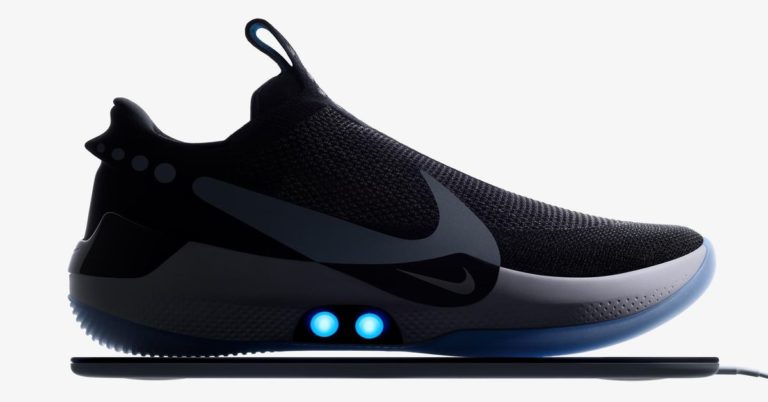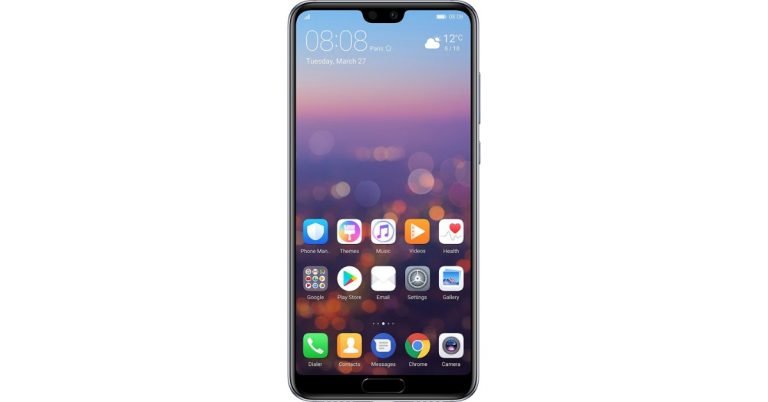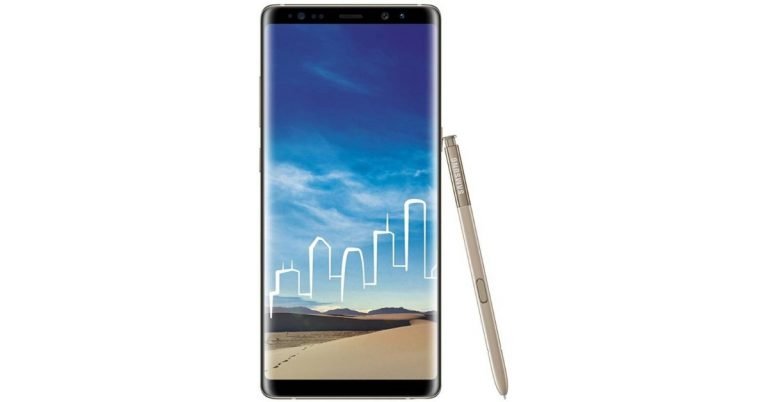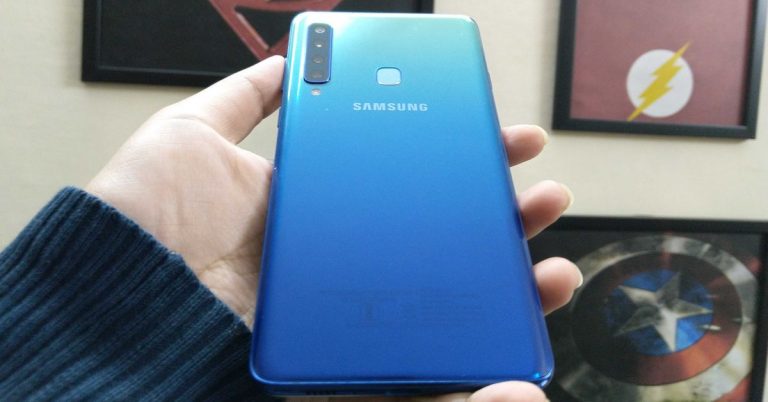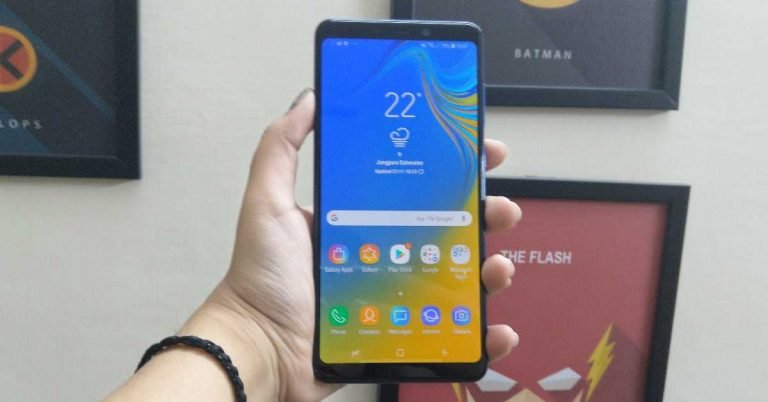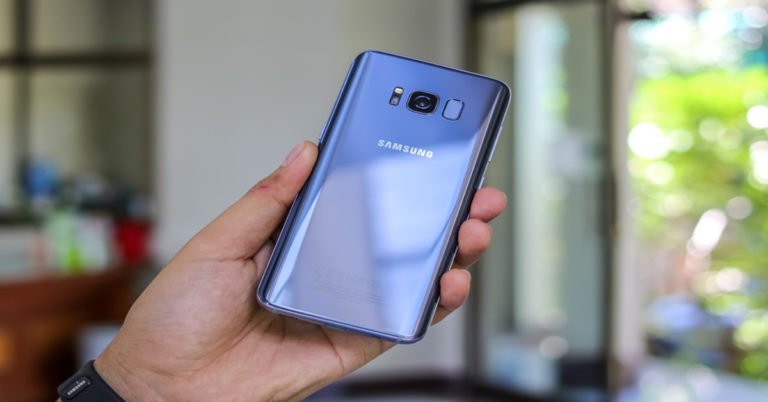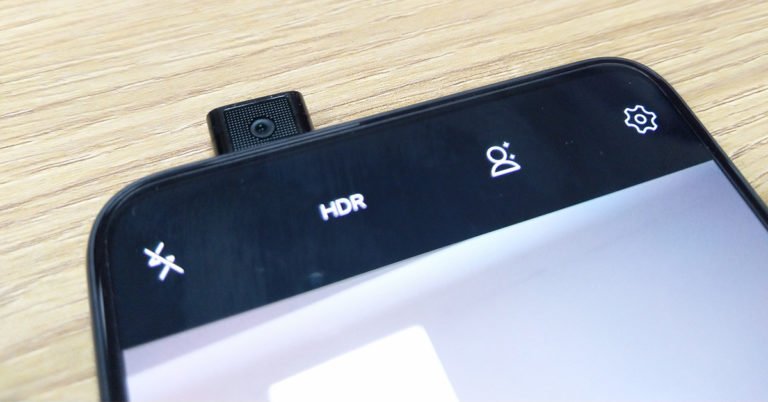Qualcomm’s latest patent case against Apple thrown out by German court
A latest patent lawsuit filed by Qualcomm Inc against Apple Inc was thrown out by the German court. This happened after Qualcomm won a court ban based on the sale of some iPhones in Germany. The Mannheim court dismissed Qualcomm’s lawsuit considering it was groundless. According to the court, the patent in question was not violated by the installation of Qualcomm’s chipsets in Apple devices.
Apple said in a statement, “We are happy with the decision and thank the court for their time and diligence. We regret Qualcomm’s use of the court to divert attention from their illegal behaviour that is the subject of multiple lawsuits and proceedings around the world.” Qualcomm had earlier said that it would win against Apple in this patent controversy after winning a case in a Munich court in December that enabled it to ban sale of older iPhones in Germany.
Don Rosenberg, Qualcomm’s executive vice president and general counsel said, “Apple has a history of infringing our patents. While we disagree with the Mannheim court’s decision and will appeal, we will continue to enforce our (intellectual property) rights against Apple worldwide.” Apple did not comment upon the Mannheim decision, it just referred to a statement that it is appealing against. This is to say, the December 20 ruling in Munich.
Apple declared during the Munich ruling that it would no longer stock the iPhone 7 and 8 at its 15 retail outlets in Germany. The tech giant’s newer models, however, are still on sale through carriers and resellers. Gravis, who is the leading Apple reseller in Germany said that it is still doing its bid to stock full range of iPhones. Apart from Germany, Qualcomm has also secured a ban of iPhones in China. Apple is selling its iPhones in China in huge numbers but after the ban, it has made some changes to the iOS operating system.
Presently, Qualcomm is facing a U.S antitrust case brought by the Federal Trade Commission. The Federal Trade Commission has accused Qualcomm for abusing its monopoly over the mobile chip technology that can bring detrimental consequences on Apple.
For the latest gadget and tech news, and gadget reviews, follow us on Twitter, Facebook and Instagram. For newest tech & gadget videos subscribe to our YouTube Channel.
Spider-Man: Far From Home trailer is out with a new super villain
The ‘Spider-Man: Far From Home’ trailer is finally out! In this trailer we see Peter Parker battling one of the most powerful Spiderman villains, Mysterio. He is wearing a black suit and he is in an adventure out of New York city. Peter Park and his school buddies are out on an international school trip in Europe, where Nick Fury makes an appearance in the film and takes Peter Parker away to save the European neighbourhood. Enough said, check out the trailer here.
Looking back, Spiderman 3 was a huge hit but wasn’t very well-received by the hardcore comic fans. Marc Webb’s The Amazing Spider Man, which was a budgeted $90 million film was based on high school romance and a lot of web slinging action.
The sequel was Amazing Spider Man 2 and it was sold as a backdoor pilot for Sony’s MCU-like Spider Man universe. This was about a young Aunt May, Venom and the Sinister Six. The Amazing Spider Man 2 was detrimental to the reboot franchise, Sony. Marvel hence made a deal in order to reboot the character within the established MCU. Then came Spider Man: Homecoming—a new Spider Man series which was part of the world of Iron Man and Captain America. The film showed a fifteen-year old high schooler with a surprisingly new girlfriend, and an Iron Man being prominent throughout the film. The film was released in 2017 and got solid reviews and earned a $334 million domestic and $881 million worldwide earnings.
Five years of the Amazing Spider Man series became a huge hit and the previous Spider Man series which went on for 12 years made a lot of money. Only time will tell how the Spider Man: Far From Home film differs from the previous Marvel films. It will probably be balancing between selling itself and protecting the secrets in Avengers: Endgame. For the first time they are coming from a credible place, and not from an overall studio slate itself. This is happening after the Spider Man series with the last movie being Spider Man 3.
This edition of Spiderman does seem to be quite exciting, the movie will be out in theatres on July 5. Right after the Avengers have saved the world.
For the latest gadget and tech news, and gadget reviews, follow us on Twitter, Facebook and Instagram. For newest tech & gadget videos subscribe to our YouTube Channel.
Nike just launched the second edition of shoes that can lace themselves on their own
Nike has launched a pair of self-lacing trainers that can fit themselves to the shape of the wearer’s feet. That’s not all, the wearer will also have the ability to control his shoes with the help of a smartphone. Called Nike Adapt BB, the new self-lacing trainers cost $350 and are set to go on sale in February. The major highlight of the newly launched smart wearables is that they don’t need a physical button to activate the laces. It is worth noticing that these trainers are the successor of a HyperAdapt 1.0, that was launched by Nike in 2016.
Speaking about the futuristic self-lacing trainers by Nike, Eric Avar, Nike’s creative director of innovation said, “We picked basketball as the first sport for Nike Adapt intentionally because of the demands that athletes put on their shoes. During a normal basketball game, the athlete’s foot changes and the ability to quickly change your fit by loosening your shoe to increase blood flow and then tighten again for performance is a key element that we believe will improve the athlete’s experience.”
With Nike Adapt BB, the users will be able to customise the fit of the shoes for themselves and control them accordingly via a smartphone app. The app will be able to save the fit preferences of the user. So, if the wearer uses the trainers for a basketball game, he will have the option of loosening them during breaks and tightening them again when he begins to play. The app will also save some additional data, and users will have the option of sharing it with Nike.
The company has said that as soon as the wearer steps into the shoes, a custom motor and gear in the trainers will be able to sense it and the shoe will adjust itself accordingly.
 Although the concept behind the trainers is really futuristic and reminds us of shoes from the movie Back to the Future Part 2, we will have to wait to see if these shoes are actually useful or just a marketing gimmick. We also hope to see the company roll out the technology to other shoes in its range as a lot of runners may find self-lacing shoes extremely useful.
For the latest gadget and tech news, and gadget reviews, follow us on Twitter, Facebook and Instagram. For newest tech & gadget videos subscribe to our YouTube Channel.
Although the concept behind the trainers is really futuristic and reminds us of shoes from the movie Back to the Future Part 2, we will have to wait to see if these shoes are actually useful or just a marketing gimmick. We also hope to see the company roll out the technology to other shoes in its range as a lot of runners may find self-lacing shoes extremely useful.
For the latest gadget and tech news, and gadget reviews, follow us on Twitter, Facebook and Instagram. For newest tech & gadget videos subscribe to our YouTube Channel.
 Although the concept behind the trainers is really futuristic and reminds us of shoes from the movie Back to the Future Part 2, we will have to wait to see if these shoes are actually useful or just a marketing gimmick. We also hope to see the company roll out the technology to other shoes in its range as a lot of runners may find self-lacing shoes extremely useful.
For the latest gadget and tech news, and gadget reviews, follow us on Twitter, Facebook and Instagram. For newest tech & gadget videos subscribe to our YouTube Channel.
Although the concept behind the trainers is really futuristic and reminds us of shoes from the movie Back to the Future Part 2, we will have to wait to see if these shoes are actually useful or just a marketing gimmick. We also hope to see the company roll out the technology to other shoes in its range as a lot of runners may find self-lacing shoes extremely useful.
For the latest gadget and tech news, and gadget reviews, follow us on Twitter, Facebook and Instagram. For newest tech & gadget videos subscribe to our YouTube Channel. Watch: Xiaomi Redmi Note 7 teardown video showcasing all its internals
Chinese smartphone brand Xiaomi last week launched the much awaited Redmi Note 7 smartphone at an event that was held in China. What made the launch even more prominent was the fact that Redmi Note 7 is the first smartphone to be launched under the independent Redmi sub-brand. The smartphone has primarily garnered appreciation for packing powerful specifications at an affordable price. However, the most notable feature of Redmi Note 7 happens to be its dual rear camera setup that comprises of a 48MP sensor and a 5MP sensor.
Just after the launch of the smartphone, a video that has been shared on Chinese instant messaging platform QQ shows the newly launched Redmi Note 7 being taken apart to showcase its internals. The teardown video begins by showing the removal of Xiaomi Redmi Note 7’s glossy back panel and hybrid nanoSIM/microSD tray. The next thing to be removed is the smartphone’s fingerprint scanner’s ribbon cable. The device’s primary logic board and other important hardware components are revealed after some thin plates are taken off.
According to GSMArena, the teardown video also showcases Redmi Note 7’s USB Type-C port which is there on a secondary logic board. The placement of the port is such that it would make it easier to repair it or replace it in case it stops working. Two more ribbon cables are placed over Redmi Note 7’s 4,000mAh battery and they connect the primary and secondary boards of the smartphone with each other.
https://www.youtube.com/watch?v=telKzIbFbBQ
We should mention that Redmi Note 7’s dual rear camera setup is covered by a single lens cover, which also means that replacing or repairing it would be easy.
Speaking about the specifications of the device, Xiaomi’s Redmi Note 7 smartphone is powered by the Snapdragon 660 processor and comes with 3GB/4GB/6GB of RAM. The smartphone is available in 32GB and 64GB storage variants and runs Android 9.0 Pie skinned with MIUI 10. Redmi Note 7 features a 6.3-inch FullHD+ display that has an aspect ratio of 19.5:9 and comes with a waterdrop shaped notch on top. The key highlight of the smartphone is its 48MP+5MP dual rear cameras. For selfies and video calls, Redmi Note 7 houses a 13MP front-facing snapper.
Video courtesy: Creator Studio, QQ
For the latest gadget and tech news, and gadget reviews, follow us on Twitter, Facebook and Instagram. For newest tech & gadget videos subscribe to our YouTube Channel.
The Huawei P20 Pro and Nova 3 have started getting Android Pie updates with EMUI 9
Huawei just announced that it is going to roll out the Android Pie for its Nova 3 and P20 Pro models. The update would be skinned with the company’s EMUI 9. The update is going arrive over-the-air (OTA) firmware. Huawei claims that the EMUI 9.0 update is going to be user-friendly. The users will find it simple, enjoyable and consistent. The EMUI 9.0 update is 12.9 percent faster than its predecessor and has the ability to launch apps at a quicker rate.
The EMUI 9.0 update includes capabilities such as consolidated menus, unified design language, new gesture-based navigation, GPU Turbo 2.0 and Powerful on device AI enhance user experience. What’s interesting about the phone is that it supports 22 Indian languages. Furthermore, it has a customised Indian calendar, deep integration of apps like Paytm aimed for executing convenient payment.
The EMUI 9.0 will also bring GPU Turbo 2.0, HiVision visual search, Password Vault, Digital Balance dashboard, navigation gestures, multiple backup options, one-handed controls and improved Huawei Share features. Looking back a few days ago, Huawei Y9(2019) was launched with a price tag of Rs 15,990. The smartphone comes with a 4GB RAM variant which brings 64GB internal storage. The smartphone sports a 6.5-inch FHD+ FullView display with an aspect ratio of 19.5:9.
The Huawei Y9(2019) comes with a 2.2GHz octa-core Kirin 710 processor and packs a 4,000mAh battery. There is a 16MP primary sensor and a 2MP secondary sensor at the back. There are two selfie cameras also on this smartphone (16MP + 2MP). It is noteworthy, that all cameras come with AI enhancements. The smartphone runs on Android Oreo skinned with EMUI 8 and is now getting the Android Pie update. The smartphone comes in two colour options—midnight black and sapphire blue.
Considering that the Nova 3 and the P20 Pro are prominent Huawei phones, the incorporation of the EMUI 9.0 might increase its usership further. The company claims that the EMUI 9.0 has been created to “enable a quality life, where the features of user interface supports consumers in creating better every day experiences and enhance smartphone functions.”
For the latest gadget and tech news, and gadget reviews, follow us on Twitter, Facebook and Instagram. For newest tech & gadget videos subscribe to our YouTube Channel.
Samsung Galaxy Note 8 starts receiving Android Pie based One UI beta update
Samsung’s One UI has been in news ever since it got unveiled by the company in November last year. Earlier this month reports surfaced online which claimed that Samsung Galaxy Note 8 One UI beta program could go live soon. We should mention that beta One UI builds for Samsung Galaxy Note 8 smartphone had already been spotted on the company’s servers at the time when these reports emerged. And now, the company has confirmed that Samsung Galaxy Note 8 will be getting the Android Pie beta.
It is worth noticing that this also improves the chances of Galaxy S8 to get the One UI based Android Pie beta. Beta builds from Samsung Galaxy S8 and Galaxy S8+ have also been spotted on the company’s servers. If our guess is right, the smartphone giant will roll out the beta launch to those two smartphones too.
Coming back to Samsung Galaxy Note 8, it is a pleasant surprise for users to know that their smartphone will be getting the Android Pie beta build. When Android Pie beta builds were rolled out to Samsung Galaxy Note 9, users were very happy to get an opportunity to experience the new One UI software. And then, the company went a step ahead and opened up the One UI based Android Pie beta for Samsung Galaxy Note 8 too.
This is the first time that the company is rolling out its beta programs to previous generation smartphones. Prior to this, it has limited beta programs only to its current flagship models.
Samsung has posted a notice on its Samsung Members app about the Galaxy Note 8 One UI beta program which says that the users of the smartphone will get to experience Android Pie based One UI earlier than others.
If you are a Samsung Galaxy Note 8 user, you should know that the registrations for the program have opened. Till now, the update has only started rolling out in India and South Korea, but it is expected to make its way to other markets too. By signing up for the beta program, you will be able to experience One UI before its stable update rolls out to masses.
For the latest gadget and tech news, and gadget reviews, follow us on Twitter, Facebook and Instagram. For newest tech & gadget videos subscribe to our YouTube Channel.
Samsung Galaxy Note 8 receives a price cut of Rs 13,000 in India
If you have been planning to buy a new smartphone, and only want a high-end device for yourself, then now seems to be a good time. This is because you can get the Samsung Galaxy Note 8 smartphone at a discounted price. It may not be Samsung‘s latest offering in its Note series, but Galaxy Note 8 still continues to be counted as one among the best buys in India. And one has all the reasons to consider Samsung Galaxy Note 8 as a good buy even now.
The smartphone comes with a QHD+ display, is equipped with an S-Pen, and sports a dual rear camera setup. So the latest price cut just makes it an even better deal than what it already was. The South Korean technology giant has just announced a price cut of Rs 13,000 on its Galaxy Note 8 smartphone. We should mention that this is not the first time that Samsung Galaxy Note 8 has received a price slash. The company has announced a price cut on the device back in August 2018 when it announced its Galaxy Note 9 smartphone. Back then, it had received a price cut of Rs 12,000.
With the latest price cut, the 6GB RAM/64GB storage model of the smartphone can be purchased at Rs 42,900. The new pricing of the smartphone has been updated on Samsung’s official website as well as its other online retailers. It is worth noticing that at least on Samsung’s website, the pricing of other RAM/storage variants has not been mentioned. Even if you opt to buy the smartphone via offline stores, you would be able to avail the offer. Furthermore, if you pay for your purchase via PayTM, you would be able to get an additional discount of Rs 1,000.
Although Samsung has mentioned on its website that this is a limited period offer, considering that it has been over a year since the smartphone has been launched, the discount is very likely to be a permanent one.
To recall, Samsung Galaxy Note 8 features a 6.3-inch Super AMOLED Infinity Display and is powered by the Exynos 8895 processor. The device has 12MP+8MP dual rear cameras and an 8MP front-facing snapper that can be used for selfies and video calls. Samsung Galaxy Note 8 houses a 3,300mAh battery and supports fast as well as wireless charging.
For the latest gadget and tech news, and gadget reviews, follow us on Twitter, Facebook and Instagram. For newest tech & gadget videos subscribe to our YouTube Channel.
Honor 10 Lite vs Xiaomi Redmi Note 6 Pro vs Realme U1: Comparison
Huawei’s sub-brand Honor today launched its Honor 10 Lite smartphone in India. Honor 10 Lite is available at a starting price of Rs 13,999 and competes with the likes of Xiaomi Redmi Note 6 Pro and Realme U1 mobiles. Here, we compare all the three devices so that you can pick the right one for yourself based on the specifications that suit your requirements. So here’s the comparison of Honor 10 Lite, Xiaomi Redmi Note 6 Pro and Realme U1 smartphones:
In This Article
Display
Honor 10 Lite: 6.21-inch full-HD+ display Xiaomi Redmi Note 6 Pro: 6.26-inch Full HD+ display Realme U1: 6.3-inch FHD+ Dewdrop LCD displayProcessor
Honor 10 Lite: HiSilicon Kirin 710 processor Xiaomi Redmi Note 6 Pro: Qualcomm Snapdragon 636 14nm processor Realme U1: MediaTek Helio P70 processorPrimary camera
Honor 10 Lite: 13MP+2MP dual rear cameras with AI scene technology Xiaomi Redmi Note 6 Pro: 12MP+5MP dual rear cameras with AI enhancements Realme U1: 13MP+2MP dual rear camerasSelfie camera
Honor 10 Lite: 24MP front-facing snapper Xiaomi Redmi Note 6 Pro: 20MP+2MP dual front cameras Realme U1: 25MP IMX576 sensorRAM and storage
Honor 10 Lite: 4GB/6GB RAM coupled with 64GB of onboard storage Xiaomi Redmi Note 6 Pro: 4GB/6GB RAM/ 64GB storage Realme U1: 3GB RAM/32GB storage, 4GB RAM/64GB storageSupport for microSD card
Honor 10 Lite: Up to 512GB Xiaomi Redmi Note 6 Pro: Up to 256GB Realme U1: Up to 256GBBattery
Honor 10 Lite: 3,400mAh battery Xiaomi Redmi Note 6 Pro: 4,000mAh battery Realme U1: 3,500mAh batteryOperating system
Honor 10 Lite: Android 9.0 Pie skinned with EMUI 9.0 Xiaomi Redmi Note 6 Pro: Android 8.1 Oreo skinned with MIUI 10 Realme U1: Android 8.1 Oreo skinned with Color OS 5.2Price
Honor 10 Lite: 4GB RAM/64GB storage version can be bought at Rs 13,999 and 6GB RAM/64GB storage variant is priced at Rs Rs 17,999. Xiaomi Redmi Note 6 Pro: 4GB RAM/64GB storage model costs Rs 13,999, the 6GB RAM/64GB storage variant can be picked up at Rs 15,999. Realme U1: 3GB RAM/32GB storage variant bears a price tag of Rs 11,999, the 4GB RAM/64GB storage model is priced at Rs 14,999. For the latest gadget and tech news, and gadget reviews, follow us on Twitter, Facebook and Instagram. For newest tech & gadget videos subscribe to our YouTube Channel.Samsung Galaxy A50 will run Android 9 out-of-the-box; to be launched soon
This year, Samsung is going to introduce a new version of Galaxy A5 known as the Galaxy A50. There have been fresh details that have emerged from a new listing. That listing states that the Samsung A50 is going to have WiFi 802.11 a/b/g/a/ac connectivity. We have also got to know that the smartphone will run on Android 9.0 Pie out-of-the-box. One important thing to note is that, the Samsung phone will have two variants, one of which is supposed to come with a single-SIM support, and the other with dual-SIM supports.
In Geekbench, the Samsung Galaxy A50 was showcased with the model number SM-A505FN. The WiFi certification on the other hand shows the number, SM-A520FN/DS. This number is speculated to be for the dual-SIM variant. Just like WiFi certification, the Geekbench listing also shows that the Samsung Galaxy A50 is going to run on Android Pie. Furthermore, it says that the smartphone would be powered by an Octa-core Exynos 7 9610 SoC. The processor includes four cortex A73 cores clocked at 2.3GHz and four Cortex A53 cores clocked at 1.6GHz.
The chipset is aided by Mali-G72 MP3 that will take care of all the visual and gaming activity. The Samsung Galaxy A50 will house a 4,000mAh battery and will have two RAM variants—4GB and 6GB. The former comes with 64GB storage and the latter comes with 128GB storage. The Samsung Galaxy A50 is also slated to have an on-screen fingerprint scanner.
According to a report by Korea-based ET News, besides Samsung Galaxy A50, the Galaxy A90 and Galaxy A70 are also going to have the on-screen fingerprint scanner. Besides this, all the Galaxy-A series smartphones are going to have multiple rear cameras and some of them will also feature Time of Flight (ToF) 3D sensors. With this, we believe the South Korean technology giant plans to grow its market share in the mid-range category of smartphones. Therefore, it intends to provide flagship phones at affordable prices, this can bring them back in the game and gain some edge of the fast running Xiaomi.
For the latest gadget and tech news, and gadget reviews, follow us on Twitter, Facebook and Instagram. For newest tech & gadget videos subscribe to our YouTube Channel.
Shashi Tharoor proposed a bill to regulate online gaming
Online gaming has become extremely popular in India with the introduction of games such as PUBG, especially. And now, Shashi Tharoor, senior Congress Member of Parliament has introduced a private member bill. This bill unveiled in Lok Sabha was introduced for regulatory measures for the online gaming industry. He stressed the necessity of the bill by highlighting high growth of the gaming industry looking a few years back.
While introducing the bill, Tharoor said, “The main purpose of my bill is to preserve the integrity of sports. The bill is primarily divided into two parts for this purpose. One part recognizes the offence of sports fraud and prescribes a special procedure to deal with it. The other part acknowledges the fact that the increasing commercial nature of sports increases financial incentives for vested interests to manipulate sporting events, therefore it provides for the regulation of online sports betting activities.”
According to Shashi Tharoor there is an immediate need for a statutory framework. This statutory framework needs to be supervised by the government in order to ensure that service providers follow licensing conditions and curb any illegal activity, in case they take place. This, according to him will reduce the flow of black money and regulate flow of finances in the industry. A report by All India Gaming Federation (AIGF) says that India has 120 million gamers which includes an increase of 30 percent, retrospecting three years before.
Online gaming in India is reportedly valued at $360 million, and is expected to grow to $1 billion by 2021. On an interesting note, the bill which Shashi Tharoor proposed plans to regulate games which would involve prediction. Also, there would be betting on sporting event results, which will happen with the help of telecommunication devices. It will be interesting to watch how this impacts the gaming consumers.
Roland Landers, the CEO of AIGF said, “There is an urgent need to have government intervention in order to streamline the industry, preserve integrity of sports and eliminate sports fraud. AIGF is committed to dealing with issues pertaining to online gaming industry.”
For the latest gadget and tech news, and gadget reviews, follow us on Twitter, Facebook and Instagram. For newest tech & gadget videos subscribe to our YouTube Channel.
YouTube brings swipe-through-videos feature for iOS devices
YouTube is pushing a new update for its iOS app that will make it simpler for user to browse videos. With the latest update, you can swipe through videos horizontally if you want to switch from one recommended video to the other. If you swipe left, then it will take you to recommended videos and if right, then you will find previously played videos. YouTube has confirmed the change to TechCrunch and said that the update will roll out to iOS users this week. However, as of now, there is no word on when YouTube’s Android app will receive it.
The newly rolled-out feature resembles the swipe gesture feature of Snapchat, Tinder and Instagram stories. The horizontal swipe trend has encompassed many prominent apps and now, it has finally made its way to YouTube. Looking back, the Google-owned video platform has been modified to a great extent and probably the most notable change in the app is its own Stories format. Other major changes in YouTube include the dark mode, automatically playing videos on mobile homepage, auto-play improvements etc.
Coming back to the newly launched feature, according to a report in Popular Science that cites the company, the swipe-through-videos feature is not something that has been decided overnight and the company has been working on it for around two years now.
It is worth mentioning that the new YouTube feature also works when the user is watching videos in full screen mode. Even then, he can swipe left to go to recommended videos and right to go to previously played videos.
Swiping has increasingly become a common trend with all popular apps, primarily because it makes it easy to use the app and increases engagement levels of the users. The swipe-through-videos feature will be accessible to a majority of YouTube users if it gets rolled out to Android smartphones too. This is because 70 percent of YouTube users access the platform via their smartphones. Prior to this, YouTube had also introduced double tap gestures that enabled users to skip forward and backward while watching a video in the smartphone app.
For the latest gadget and tech news, and gadget reviews, follow us on Twitter, Facebook and Instagram. For newest tech & gadget videos subscribe to our YouTube Channel.
Asus to unveil a Zenbook series laptop on January 30 in India
Taiwanese consumer electronics maker Asus has made quite a mark for itself in the Indian smartphone market in 2018. Whether it was its budget smartphones like Zenfone Max Pro M1 and Zenfone Max Pro M2 or its high-end gaming ROG Phone, they all garnered a lot of appreciation from users.
And it seems like Asus is planning to start the year by not focussing on smartphones, but by launching its laptops in the country. The company has sent out a save the date invite to Indian tech press saying that it will be launching the new Zenbook series on January 30. The invite doesn’t say much. It has only asked us to block our date for event that is scheduled to take place in New Delhi.
So that leaves a lot to just speculations. Although there is no word on what the company plans to launch on January 30, we personally are hoping to see Asus Zenbook S13 laptop in India. For those unaware, the laptop was recently showcased at CES 2019 in Las Vegas and is the first ever to come with a reversed notch on the top of its display. Along with the reversed notch, Asus Zenbook S13 also comes with trimmed down bezels to provide users with as much screen space as possible. Speaking of internals, Asus Zenbook S13 laptop is powered by 8th Gen Intel Core i7 and comes with 16GB of RAM and up to 1TB of PCIe SSD storage.
Although we can’t wait to get our hands on the device, some may argue that it is too soon for the launch of the laptop in India, considering that it hasn’t even gone on sale in the United States yet. And that is a fair point too.
 So the only next option that we can think of is Asus Zenbook 13 laptop that the company launched at IFA 2018 in Berlin. Speaking about the laptop, it comes with a new frameless Asus NanoEdge display and is equipped with a NumberPad which, according to the company, a LED-illuminated numeric keypad built into the touchpad of the laptop. Powered by the latest 8th Generation Intel Core i7 quad-core processor, Asus Zenbook 13 comes with Nvidia GeForce GTX 1050 Max-Q graphics.
However, as of now, this too is just a speculation and we will have to wait till January 30 to find out what is it that Asus really has up its sleeve.
For the latest gadget and tech news, and gadget reviews, follow us on Twitter, Facebook and Instagram. For newest tech & gadget videos subscribe to our YouTube Channel.
So the only next option that we can think of is Asus Zenbook 13 laptop that the company launched at IFA 2018 in Berlin. Speaking about the laptop, it comes with a new frameless Asus NanoEdge display and is equipped with a NumberPad which, according to the company, a LED-illuminated numeric keypad built into the touchpad of the laptop. Powered by the latest 8th Generation Intel Core i7 quad-core processor, Asus Zenbook 13 comes with Nvidia GeForce GTX 1050 Max-Q graphics.
However, as of now, this too is just a speculation and we will have to wait till January 30 to find out what is it that Asus really has up its sleeve.
For the latest gadget and tech news, and gadget reviews, follow us on Twitter, Facebook and Instagram. For newest tech & gadget videos subscribe to our YouTube Channel.
 So the only next option that we can think of is Asus Zenbook 13 laptop that the company launched at IFA 2018 in Berlin. Speaking about the laptop, it comes with a new frameless Asus NanoEdge display and is equipped with a NumberPad which, according to the company, a LED-illuminated numeric keypad built into the touchpad of the laptop. Powered by the latest 8th Generation Intel Core i7 quad-core processor, Asus Zenbook 13 comes with Nvidia GeForce GTX 1050 Max-Q graphics.
However, as of now, this too is just a speculation and we will have to wait till January 30 to find out what is it that Asus really has up its sleeve.
For the latest gadget and tech news, and gadget reviews, follow us on Twitter, Facebook and Instagram. For newest tech & gadget videos subscribe to our YouTube Channel.
So the only next option that we can think of is Asus Zenbook 13 laptop that the company launched at IFA 2018 in Berlin. Speaking about the laptop, it comes with a new frameless Asus NanoEdge display and is equipped with a NumberPad which, according to the company, a LED-illuminated numeric keypad built into the touchpad of the laptop. Powered by the latest 8th Generation Intel Core i7 quad-core processor, Asus Zenbook 13 comes with Nvidia GeForce GTX 1050 Max-Q graphics.
However, as of now, this too is just a speculation and we will have to wait till January 30 to find out what is it that Asus really has up its sleeve.
For the latest gadget and tech news, and gadget reviews, follow us on Twitter, Facebook and Instagram. For newest tech & gadget videos subscribe to our YouTube Channel. 11 things to do to stop your smartphone from overheating
A lot of smartphone users complain about their devices getting overheated. The reasons for this can be many, depending upon which, the solutions can vary too. Here, we list down some quick fixes that you can try if your smartphone often gets overheated too.
 By this, we don’t mean that you shouldn’t use your smartphone in sunlight at all. Just make sure that you don’t keep it outdoors for too long in the sun as that can directly lead to overheating of your device.
By this, we don’t mean that you shouldn’t use your smartphone in sunlight at all. Just make sure that you don’t keep it outdoors for too long in the sun as that can directly lead to overheating of your device.
 Gaming is one among the top reasons that can lead to overheating in a smartphone. If you play games with heavy graphics like PUBG Mobile, make sure you take breaks while doing so and don’t leave the app running in the background once you are done.
Gaming is one among the top reasons that can lead to overheating in a smartphone. If you play games with heavy graphics like PUBG Mobile, make sure you take breaks while doing so and don’t leave the app running in the background once you are done.
 Overheating of your smartphone can also be caused because of an issue with your charging cable. If this indeed is the case, changing the charging cable may solve the overheating issue for you.
Overheating of your smartphone can also be caused because of an issue with your charging cable. If this indeed is the case, changing the charging cable may solve the overheating issue for you.
 Another very major reason behind overheating of your smartphone can be using the camera app of your device to take long-form videos. If you feel your smartphone begins heating up whenever you shoot videos from it, avoid doing that altogether.
Another very major reason behind overheating of your smartphone can be using the camera app of your device to take long-form videos. If you feel your smartphone begins heating up whenever you shoot videos from it, avoid doing that altogether.
 Another major reason behind your smartphone overheating can be malware. To make sure that your Android smartphone is malware-free, install an anti-virus app from Play Store.
Another major reason behind your smartphone overheating can be malware. To make sure that your Android smartphone is malware-free, install an anti-virus app from Play Store.
 It has been claimed by various platforms that you shouldn’t charge your smartphone to 100%. Doing this not only shortens the lifespan of your smartphone’s battery, but your device is more likely to overheat when it is fully charged. Ideally, you should put it on charging when you have only 30% battery left and should unplug the charger once you get to 80%.
It has been claimed by various platforms that you shouldn’t charge your smartphone to 100%. Doing this not only shortens the lifespan of your smartphone’s battery, but your device is more likely to overheat when it is fully charged. Ideally, you should put it on charging when you have only 30% battery left and should unplug the charger once you get to 80%.
 If you have multiple apps and Chrome tabs open in your smartphone, they will make your device work overtime. This not only drains the battery of your smartphone but can also make it heat up. So get into the habit of closing all the unused apps and Chrome tabs on your device.
If you have multiple apps and Chrome tabs open in your smartphone, they will make your device work overtime. This not only drains the battery of your smartphone but can also make it heat up. So get into the habit of closing all the unused apps and Chrome tabs on your device.
 Smartphones can sometimes overheat because of a software issue. However, when this happens, companies usually roll out a fix to the issue as a part of another update. Installing it will stop your smartphone from overheating.
Smartphones can sometimes overheat because of a software issue. However, when this happens, companies usually roll out a fix to the issue as a part of another update. Installing it will stop your smartphone from overheating.
 If there are any apps in your smartphone that you don’t use, you must install them. Other than this, you can turn off notifications and disable sharing of location from various apps. All of these put together can contribute to making your smartphone overheat.
If there are any apps in your smartphone that you don’t use, you must install them. Other than this, you can turn off notifications and disable sharing of location from various apps. All of these put together can contribute to making your smartphone overheat.
 If you have a plan where you know you wouldn’t be required to use your smartphone for a long time, put your device on the airplane mode in such a case. This will help you save battery, and at the same time, keep your smartphone from overheating.
If you have a plan where you know you wouldn’t be required to use your smartphone for a long time, put your device on the airplane mode in such a case. This will help you save battery, and at the same time, keep your smartphone from overheating.
 When you are not using Bluetooth, make sure it is switched off on your device. It may sound trivial, buy leaving Bluetooth on can make your smartphone heat up a lot. If your smartphone auto-connects via Bluetooth to any of your other devices, switch off the auto-pairing too. It may be a little inconvenient, but it will enhance the health of your device.
For the latest gadget and tech news, and gadget reviews, follow us on Twitter, Facebook and Instagram. For newest tech & gadget videos subscribe to our YouTube Channel.
[td_smart_list_end]
When you are not using Bluetooth, make sure it is switched off on your device. It may sound trivial, buy leaving Bluetooth on can make your smartphone heat up a lot. If your smartphone auto-connects via Bluetooth to any of your other devices, switch off the auto-pairing too. It may be a little inconvenient, but it will enhance the health of your device.
For the latest gadget and tech news, and gadget reviews, follow us on Twitter, Facebook and Instagram. For newest tech & gadget videos subscribe to our YouTube Channel.
[td_smart_list_end]
In This Article
Don’t put your smartphone in the direct sunlight
 By this, we don’t mean that you shouldn’t use your smartphone in sunlight at all. Just make sure that you don’t keep it outdoors for too long in the sun as that can directly lead to overheating of your device.
By this, we don’t mean that you shouldn’t use your smartphone in sunlight at all. Just make sure that you don’t keep it outdoors for too long in the sun as that can directly lead to overheating of your device.
Take breaks while playing games
 Gaming is one among the top reasons that can lead to overheating in a smartphone. If you play games with heavy graphics like PUBG Mobile, make sure you take breaks while doing so and don’t leave the app running in the background once you are done.
Gaming is one among the top reasons that can lead to overheating in a smartphone. If you play games with heavy graphics like PUBG Mobile, make sure you take breaks while doing so and don’t leave the app running in the background once you are done.
Change the charging cable
 Overheating of your smartphone can also be caused because of an issue with your charging cable. If this indeed is the case, changing the charging cable may solve the overheating issue for you.
Overheating of your smartphone can also be caused because of an issue with your charging cable. If this indeed is the case, changing the charging cable may solve the overheating issue for you.
Avoid shooting long videos
 Another very major reason behind overheating of your smartphone can be using the camera app of your device to take long-form videos. If you feel your smartphone begins heating up whenever you shoot videos from it, avoid doing that altogether.
Another very major reason behind overheating of your smartphone can be using the camera app of your device to take long-form videos. If you feel your smartphone begins heating up whenever you shoot videos from it, avoid doing that altogether.
Install an anti-virus app on your smartphone
 Another major reason behind your smartphone overheating can be malware. To make sure that your Android smartphone is malware-free, install an anti-virus app from Play Store.
Another major reason behind your smartphone overheating can be malware. To make sure that your Android smartphone is malware-free, install an anti-virus app from Play Store.
Charge your smartphone’s battery to only 80%
 It has been claimed by various platforms that you shouldn’t charge your smartphone to 100%. Doing this not only shortens the lifespan of your smartphone’s battery, but your device is more likely to overheat when it is fully charged. Ideally, you should put it on charging when you have only 30% battery left and should unplug the charger once you get to 80%.
It has been claimed by various platforms that you shouldn’t charge your smartphone to 100%. Doing this not only shortens the lifespan of your smartphone’s battery, but your device is more likely to overheat when it is fully charged. Ideally, you should put it on charging when you have only 30% battery left and should unplug the charger once you get to 80%.
Close the apps and Chrome tabs that are not in use
 If you have multiple apps and Chrome tabs open in your smartphone, they will make your device work overtime. This not only drains the battery of your smartphone but can also make it heat up. So get into the habit of closing all the unused apps and Chrome tabs on your device.
If you have multiple apps and Chrome tabs open in your smartphone, they will make your device work overtime. This not only drains the battery of your smartphone but can also make it heat up. So get into the habit of closing all the unused apps and Chrome tabs on your device.
Update your smartphone regularly
 Smartphones can sometimes overheat because of a software issue. However, when this happens, companies usually roll out a fix to the issue as a part of another update. Installing it will stop your smartphone from overheating.
Smartphones can sometimes overheat because of a software issue. However, when this happens, companies usually roll out a fix to the issue as a part of another update. Installing it will stop your smartphone from overheating.
Remove any apps or functions that you don’t use
 If there are any apps in your smartphone that you don’t use, you must install them. Other than this, you can turn off notifications and disable sharing of location from various apps. All of these put together can contribute to making your smartphone overheat.
If there are any apps in your smartphone that you don’t use, you must install them. Other than this, you can turn off notifications and disable sharing of location from various apps. All of these put together can contribute to making your smartphone overheat.
Put your device on airplane mode when it’s not in use
 If you have a plan where you know you wouldn’t be required to use your smartphone for a long time, put your device on the airplane mode in such a case. This will help you save battery, and at the same time, keep your smartphone from overheating.
If you have a plan where you know you wouldn’t be required to use your smartphone for a long time, put your device on the airplane mode in such a case. This will help you save battery, and at the same time, keep your smartphone from overheating.
Switch off the Bluetooth when not required
 When you are not using Bluetooth, make sure it is switched off on your device. It may sound trivial, buy leaving Bluetooth on can make your smartphone heat up a lot. If your smartphone auto-connects via Bluetooth to any of your other devices, switch off the auto-pairing too. It may be a little inconvenient, but it will enhance the health of your device.
For the latest gadget and tech news, and gadget reviews, follow us on Twitter, Facebook and Instagram. For newest tech & gadget videos subscribe to our YouTube Channel.
[td_smart_list_end]
When you are not using Bluetooth, make sure it is switched off on your device. It may sound trivial, buy leaving Bluetooth on can make your smartphone heat up a lot. If your smartphone auto-connects via Bluetooth to any of your other devices, switch off the auto-pairing too. It may be a little inconvenient, but it will enhance the health of your device.
For the latest gadget and tech news, and gadget reviews, follow us on Twitter, Facebook and Instagram. For newest tech & gadget videos subscribe to our YouTube Channel.
[td_smart_list_end] Steelbird SBA-1 HF motorbike helmet with mobile audio launched in India
In case you are driving a bike and get an emergency call in the midst of it, it is impossible to pick it up, isn’t it? Well, this problem would now be solved with the Steelbird SBA-1 HF helmet. The SBA-1 HF is battery less, and provides high-quality sound on top of powerful performance. The helmet connects to your phone with the help of an AUX cable so that you can drive, talk or listen to music at the same time. The SBA-1 Hands Free has a single directional microphone that helps in noise cancellation.
There are speakers in the helmet, on the other hand don’t have a noise cancellation feature that helps the rider to hear outside sound, and thus be aware of the road around him. Due to easy access to the single directional microphone, riders can use Google Assistant very conveniently. There is a dedicated button to help you call and disconnect which easily accessible on the helmet. This helps you from not getting distracted while riding the motorcycle.
The helmet incorporated waterproof mechanisms with IP5 water-resistant hands-free parts. With the single direction MIC, none other than the voice of the rider is transmitted to the other side. The company claims that the Steelbird SBI-1 HF helmet manages the sound in such a way that the rider can coordinate well with the sounds outside. Thus, without hampering the ride, the helmet is able to execute its voice technology properly.
There is an Innovative ventilation system equipped with an air intake in the chin guard, frontal and top area. It also includes two rear extractors for recycling air inside the helmet. A Polycarbonte Anti Scratch Coated Visor Quick Release Visor mechanism kit has been incorporated for the comfort of the rider. The Steelbird SBA-HF Helmet comes in three colour options—red, black and white. Size variants range from 58cm to 60cm and is priced at Rs 2,589. It can be picked up from their website or offline dealers.
For the latest gadget and tech news, and gadget reviews, follow us on Twitter, Facebook and Instagram. For newest tech & gadget videos subscribe to our YouTube Channel.
Realme 3 smartphone to sport a 48MP primary camera: Report
Last week, Chinese smartphone brand Xiaomi launched its Redmi Note 7 smartphone that sports a 48MP rear camera. And now, a report has surfaced online which suggests that Oppo‘s sub-brand Realme will be following the suit and it has plans to incorporate a 48MP camera in its upcoming Realme 3 smartphone.
Xiaomi‘s smartphone was not only appreciated for its camera specification, but also for its affordable price. Although the device is not expected to be launched in India before February, it has definitely got the rival companies to work on their offerings considering that Xiaomi has been dominating the budget segment of the Indian smartphone market for quite some time now.
So it’s not entirely surprising that Realme has plans to launch the Realme 3 smartphone with a 48MP primary camera. And this information was revealed by none other than the company’s CEO Madhav Sheth.
Speaking to The Indian Express, Realme CEO Madhav Sheth said that the company’s Realme 3 smartphone could launch as early as Q1 2019 and he hinted that like Realme U1, the upcoming device could also be aimed at those who are obsessed with clicking selfies. This information is directly in-sync with the company’s plans to incorporate a 48MP primary camera, because the Chinese smartphone brand may be looking to launch a photography-centric smartphone.
Sheth also told The Indian Express that Realme also has plans to launch exclusive offline experience stores in the second half of 2019.
We are looking forward to the release of the smartphone and it will surely be interesting to see which among Xiaomi’s Redmi Note 7 and Oppo’s Realme 3 mobile manages to woo the targeted customers.
Realme’s current lineup in India includes Realme U1, Realme 2, Realme 2 Pro, and Realme C1. Interestingly, all of the company’s smartphones are priced between Rs 8,000 and Rs 20,000.
Although Realme is Oppo’s sub-brand, it is trying to create its own identity in the budget segment of the Indian smartphone market and is primarily targeting the youth with its products. Most of the smartphones by the company have been appreciated to offer powerful specifications at an affordable price point.
For the latest gadget and tech news, and gadget reviews, follow us on Twitter, Facebook and Instagram. For newest tech & gadget videos subscribe to our YouTube Channel.
Nokia 9 PureView launch date delayed again
The Nokia 9 PureView was supposed to debut at the end of this month. However, HMD Global has postponed it to the period of Mobile World Congress (MWC) 2019. This is to say, that the Nokia 9 PureView will be launched at the end of February now. To recall, the smartphone has been rumoured to release since last year, but HMD Global delayed the launch due to production line issues. On this pretext, there was a Nokia_Leaks tweet the other day that claimed that the smartphone would now launched during the MWC.
The launch delay reportedly occurred due to problems with its penta-lens camera. Another tipster said that HMD Global would send invitations if it schedules the launch event this month, which now seem unlikely. Nokia 9 PureView is expected to come with five camera sensors at the back and will feature a notch-less, PureDisplay panel. Also, there will be an in-display fingerprint sensor. The Nokia 9 PureView would experience cut-throat competition from Samsung Galaxy S10. The S10’s highlights include thin-bezel displays, newer design language and 5G support.
The penta-lens camera of the Nokia 9 PureView could have five Zeiss-branded camera sensors and dedicated low-light technology to illuminate the images. Just like other Nokia phones, this one will also have Google’s Android One branding. A few days ago, HMD Global leaked renders of the upcoming Nokia 6.2. From what we know, the smartphone is going to come with two RAM variations, that is 4GB and 6GB. It will be powered by a mid-range Snapdragon 632 SoC and will come with a 12MP dual-camera setup at the back.
The Nokia 6.2 is also supposed to debut during MWC. To talk about the specifications more, the Nokia 6.2 will sport a 5.9-inch QHD+ PureView display. Plus, the device will come with a fingerprint scanner. It will house a 4,150mAh battery and will run on Android 9.0 Pie.
Hopefully, this is the last time we will see the Nokia 9 PureView getting delayed. Seems like MWC will be the time all the big smartphones will be making their debut, except Apple.
Image courtesy: LoveNokia
For the latest gadget and tech news, and gadget reviews, follow us on Twitter, Facebook and Instagram. For newest tech & gadget videos subscribe to our YouTube Channel.
Honor 10 Lite with dual rear cameras, Android Pie launched in India: Price and specifications
Huawei’s sub-brand Honor has today unveiled its Honor 10 Lite smartphone in India. It is worth noticing that the device was previously launched in China in November last year and in India, it will be available for purchase via Flipkart and Honor’s online shopping store.
Honor 10 Lite sports a 24MP selfie camera that comes with AI enhancements and is powered by HiSilicon Kirin 710 processor. The device runs android 9.0 Pie out-of-the-box and sports a ‘dewdrop’-shaped notch on its display. Here are the pricing details and specifications of the newly launched device:
In This Article
Honor 10 Lite price in India
Honor 10 Lite mobile is available in 4GB and 6GB RAM options in India. While the former is priced at Rs 13,999, the latter bears a price tag of Rs 17,999. Both the variants can be bought in Midnight Black, Sapphire Blue and Sky Blue colour options. We should mention that among these, the Sky Blue coloured variant comes with a gradient finish on its back panel. The device can be picked up from either Flipkart or HiHonor India store starting 12 am on January 20. As a part of launch offers, Honor 10 Lite buyers will get a Jio cashback of Rs 2,200 and a Cleartrip voucher worth Rs 2,800.Honor 10 Lite specifications
Honor 10 Lite smartphone can hold dual nano-SIM cards and runs Android 9.0 Pie with EMUI 9.0 baked on top. The device features a 6.21-inch full-HD+ display which has a dewdrop-shaped notch on top, a pixel density of 415ppi and a screen-to-body ratio of 91%. Honor 10 Lite comes with a TUV-certified eye care mode which, according to the company, can reduce the blue light effect from the display and hence, decreases the strain on users’ eyes. Honor 10 Lite smartphone is powered by a HiSilicon Kirin 710 processor clubbed with either 4GB or 6GB of RAM and a GPU Turbo 2.0 technology. The mobile phone has 64GB of internal storage and can hold a microSD card of up to 512GB. For imaging duties, there is a 13MP primary camera that has an f/1.8 aperture and a 2MP secondary sensor. On the front panel, there is a 24MP front-facing snapper with an f/2.0 aperture that can be used to click selfies and video calls. The camera app of the newly-launched device has AI scene recognition that is claimed to recognise eight different scenes including sky, beach, plant, flower, snow, room, stage and night. The cameras are also said to have AI-based facial recognition. The smartphone houses a 3,400mAh battery and comes with 4G VoLTE, Wi-Fi, Bluetooth v4.2, 3.5mm audio jack, and GPS for connectivity. For the latest gadget and tech news, and gadget reviews, follow us on Twitter, Facebook and Instagram. For newest tech & gadget videos subscribe to our YouTube Channel.OnePlus is taking over Apple’s spotlight in India
iPhones sale reportedly fell short from 3.2 million in 2017 to 1.7 million in 2018 in India. This drastic fall, if calculated is a 50% difference between the two years. This is reportedly owed to the rise of OnePlus in the competition of the premium smartphone segment. On one hand, Apple lost its credibility over the $400 price band. On the other, OnePlus reached its highest shipments during the end of third quarter of 2018. Another sad thing about Apple is that the latest models, iPhone XS Max, iPhone XR are priced very high even for loyal Apple customers in India.
The blame of iPhone XS Max and iPhone XR price hike cannot be completely given to Apple. It is also because of the weak rupee that has relatively hiked the prices of goods. Tarun Pathak, associate director of Counterpoint said, “The $1,000-plus price tag for new (iPhone) models—even after the offers—was too much for the buyers. So, the older generation iPhones which used to drive volume were hit by Android flagships and new ones were costly.”
Tim Cook, the CEO of Apple observed on Jan 2 that the market of his company was bleak—especially in China. And therefore—in order to compensate for its weak Chinese market—it is aiming to set a strong foothold in India. Rushabh Doshi, research manager at Singapore-based market research firm a Canalys, in a report on QZ said, “At the beginning of 2019, Apple began reining in distribution to ensure strict price control across all channels. Online retailers were no longer able to subsidise costs of the device heavily to ensure growth in GMV (gross merchandise value), thereby hurting sell-through and demand of the expensive iPhones.”
In order to counter the price hike, Apple intends to make its phones more affordable, the ones which will be manufactured in India. The cost savings would eventually be passed on to customers or used for channel expansion and marketing. 2018 was the year of a less costly iPhone, the iPhone XR, the other two models did not fare well in India in many Asian markets because of it high price. Hopefully with these smartphones being manufactured in India by Foxconn and Apple, the price can come down considerably for them to again become buyable. Otherwise OnePlus has a very strong chance to gain more ground over Apple during 2019.
For the latest gadget and tech news, and gadget reviews, follow us on Twitter, Facebook and Instagram. For newest tech & gadget videos subscribe to our YouTube Channel.
Samsung to launch three Galaxy A-series smartphones with in-display fingerprint sensors in 2019: Report
South Korean technology giant Samsung has started catching up with various trends of the smartphone industry and at the same time, it has started setting trends too. For instance, it launched Samsung Galaxy A9 (2018) last year, which is the world’s first smartphone to come with a quadruple rear camera setup. This was followed by the launch of Samsung Galaxy A8s, which is the first ever smartphone to sport a punch-hole display to house the selfie camera.
However, until now, the company does not have a smartphone that comes with an in-display fingerprint scanner and all prior reports said that the feature will be seen on Samsung Galaxy S10 mobile. And now, a new report has emerged that says the on-screen fingerprint sensor will be seen on Galaxy A-series devices too.
According to a report in Korea-based ET News, the technology giant will be launching three Galaxy A-series smartphones this year that will sport an in-display fingerprint scanner. The three smartphones are said to be the Samsung Galaxy A90, Galaxy A70, and Galaxy A50. From just their names, Samsung Galaxy A90 seems to be the most powerful of the three.
The source quoted by ET News says that Samsung has already got suppliers onboard for the sensor and modules and it plans to launch the smartphones in Q2 2019. It has also been reported that Aegis Technology will be manufacturing the sensor module of the new devices by Samsung and that the in-display fingerprint scanners will be optical in nature and not ultrasonic. We should mention that the on-screen fingerprint sensors being used in Samsung Galaxy S10 models are reportedly ultrasonic.
The report further goes on to tell that the mass production will be handled by Partron and Mcnex.
Samsung has not only planned the launches of Galaxy A90, Galaxy A70, and Galaxy A50 smartphones in 2019. It has been reported that the company plans to launch six other smartphones during the year. Among all the smartphones that will be launched, Galaxy A-series devices will sport multiple rear cameras and some of them will feature Time of Flight (ToF) 3D sensors.
The South Korean technology giant has plans to grow its market share in the mid-range category of smartphones. So, the company’s strategy involves offering flagship features at an affordable price.
For the latest gadget and tech news, and gadget reviews, follow us on Twitter, Facebook and Instagram. For newest tech & gadget videos subscribe to our YouTube Channel.
Apple’s COO claims that Qualcomm refused to provide chips for 2018 iPhones
The Chief Operating Officer (COO) of Apple said that last year, Qualcomm refused to provide chips to the Tech giant because Qualcomm was sued by it back in 2017, according to news sources. Jeff Williams, the COO said that the chipmaker forced Apple to use Intel modems exclusively in iPhone XS Max, iPhone XS, and iPhone XR. This shows that the decision was not made by Cupertino, the California-based iPhone maker. In spite of trying to negotiate with Qualcomm multiple times, Williams said, he failed.
And consequently, he was forced to use modems built by Intel. iPhone makers have been using Qualcomm chipsets for quite some time now. As such, the rift between the two parties must have costed Apple with a lot of adjustment issues. On the other hand, quoting Qualcomm from 2017, we get a contrary picture. In 2017, the chipmaker said in a statement to Bloomberg news, “We are committed to supporting Apple’s new devices consistent with our support of all others in the industry.”
It claims that it had already “tested and released to Apple” the modems for being incorporated in the iPhones. On Monday, Apple said that Qualcomm had contacts with other chip providers in order to manufacture chips. This has its own pros and cons for Apple. Firstly, it has helped the company to cut down costs. Secondly, due to possibility of an issue/disagreement with any one chip provider it should be prudent and wise enough to provide a contingency plan.
Though Jeff Williams said that Qualcomm had stopped providing it chipsets during 2018, he admitted that the chipmaker continued to assist it for its older phones. The government has reportedly blamed Qualcomm to misuse its position and forcing customers to use its products and squeeze them for high patent licensing fees.
Recently, it has been known that Apple’s AirPower wireless charging mat might be in production. Based on the ChargerLAB tweet, it has been tipped that Apple has already started manufacturing the AirPower wireless charging mat.
For the latest gadget and tech news, and gadget reviews, follow us on Twitter, Facebook and Instagram. For newest tech & gadget videos subscribe to our YouTube Channel.
Samsung’s 5G smartphone to be named Galaxy S10 X: Report
Samsung Galaxy S10 and Galaxy S10+ smartphones have been making headlines for months now. And the latest report talks about the 5G variant of the smartphone. According to Korea-based publication ETNews, Samsung‘s first 5G-enabled smartphone will be called Galaxy S10 X. It is worth noticing that ‘X’ in the name of the device reportedly stands for 10, since the Galaxy lineup turns ten this year. However, that’s not all that it denotes. It also stands for ‘experience’ and ‘expand’, according to the report.
Samsung Galaxy S10 X will be launched in late March in South Korea and will be unveiled only after other Galaxy S10 variants are launched. The report also says that the ‘fully-loaded’ model will cost between KRW 1.6 million to KRW 1.8 million ($1,425-$1,600).
Contrary to other reports, it has also been said that there will not be a separate Unpacked event at the MWC, which could mean that the 5G variant of the device will be launched on February 20 along with other Galaxy S10 models and the foldable phone. However, we don’t think this piece of information is true considering that Samsung has already announced the Unpacked event for February 20 and there is no other word about the 5G variant being launched on the said date.
It has previously been reported that Samsung Galaxy S10 X will come with a 6.7-inch display that will have an ultrasonic fingerprint scanner embedded on it. The smartphone will reportedly come with a quadruple camera setup on its back panel, much like Samsung Galaxy A9 (2018). Samsung Galaxy S10 X is expected to house a 5,000mAh battery and will reportedly come with more than 10GB of RAM and 1TB of storage. However, it is worth noticing that there is a possibility that 1TB storage means 512GB of internal storage and 512GB of microSD card capacity.
On an unrelated note, the company also hinted yesterday that it may launch its foldable phone Galaxy F along with the three Samsung Galaxy S10 variants on February 20. Samsung has placed two Galaxy Unpacked event banners at Place de la Concorde in Paris. The banners said ‘Unfolding the future’, which can be taken as a direct hint that the company will be seen launching the foldable phone along with other Galaxy S10 models at the event.
For the latest gadget and tech news, and gadget reviews, follow us on Twitter, Facebook and Instagram. For newest tech & gadget videos subscribe to our YouTube Channel.
Kumbh Mela 2019: Airtel TV app gets a dedicated channel to stream the event
Bharti Airtel has today introduced a dedicated channel to live-stream the Kumbh Meal 2019. The Airtel TV app now has a special channel that has been dedicated to the Kumbh proceedings to get users all the live updates from the event to the screen of their smartphones. Airtel, in its press statement, said that it has tied up with VR devotee to bring this exclusive content to those who use their app.
VR Devotee is said to be India’s leading devotional content provider. According to the telecom major, wherever Airtel users may be, they will be able to see the proceedings to Kumbh because of this tie-up. If you are interested in watching the Kumbh Mela 2019, you should know that this VR Devotee powered channel is live on the Airtel TV already and it will keep running till March 4, 2019. In order to watch this content, you must have the Android or iOS version of the Airtel TV app installed on your device.
That’s not all. As a part of the partnership with VR Devotee, Airtel is also putting up special kiosks at the venue in Prayagraj. At these kiosks, visitors can go to get virtual reality based immersive experience. We should mention that VR Devotee has earlier partnered with over 200 major temples and spiritual leaders in India to live stream events like Mysuru Dusshera, Mahamasthakbhisheka, Ganesh Visarjan, etc.
Speaking about the partnership, Sameer Batra, CEO of Content and Apps, Bharti Airtel said, “Kumbh is amongst the biggest and most important events in India and we endeavour to bring it closer to our customers. Airtel TV app will allow users to enjoy the Kumbh experience on their smartphones anytime and from anywhere in fast emerging Digital India. We invite Airtel customers to enjoy this special digital experience on Airtel TV app and also discover a wide range of exclusive and exciting content including 400 LIVE TV channels and over 10,000 movies and shows.”
It is worth mentioning that Airtel TV app has content in 15 languages including Hindi, English, Tamil, Telugu, Kannada, Malayalam, Bengali, Marathi, Oriya, Assamese, Bhojpuri, Punjabi, Gujarati, Urdu and French.
For the latest gadget and tech news, and gadget reviews, follow us on Twitter, Facebook and Instagram. For newest tech & gadget videos subscribe to our YouTube Channel.
Google Pixel 3 Lite XL to come with Snapdragon 710 SoC and 6GB of RAM: Report
Google has been in news for having two more Pixel 3 smartphones under production for quite some time now. And with each new report that surfaces online, the more credible this information seems to be. And now, the benchmark score of a new smartphone in the Pixel series has surfaced online on Geekbench and it reveals some of the key specifications of the device. The listing makes it look like the first ever pure-play mid-range smartphone from Google’s Pixel series.
On Geekbench, a listing under the name of Foxconn Pixel 2 XL comes with Qualcomm Snapdragon 710 processor and is backed by 6GB of RAM. Various media reports suggest that this smartphone could be the mid-range Lite Pixel variant by Google.
 However, we should also mention that this defies the report that suggested that Pixel 3 Lite and Pixel 3 Lite XL smartphones will be powered by Qualcomm’s Snapdragon 670 processor and not have as much as 6GB of RAM. It is also worth noticing that the names of the smartphones have not been confirmed as yet.
Coming back to the listing, with Qualcomm’s Snapdragon 710 SoC, Google’s upcoming smartphone would be more affordable than the current Pixel models, and the plus point is that we’ll get this without compromising too much on the processing power of the device.
Qualcomm’s Snapdragon 710 is primarily used in mid-range handsets like the Nokia 8.1 Plus. However, what is interesting is that in spite of the smartphone being powered by a processor that is not as high-end as the one that powers the current Pixel devices, the upcoming smartphone will come with a bigger RAM. While the current Pixel smartphones have 4GB of RAM, the upcoming handset is shown to have 6GB of RAM.
The Geekbench listing also shows the single-core and multi-core scores of the smartphone, which are 1805 and 5790 respectively. We should also mention that Foxconn, which is best known for manufacturing iPhones, is handling the production of Pixel 3 and Pixel 3 XL smartphones. If this listing is indeed correct, we expect Foxconn to even produce the upcoming Pixel smartphone by Google.
Image courtesy: Geekbench
For the latest gadget and tech news, and gadget reviews, follow us on Twitter, Facebook and Instagram. For newest tech & gadget videos subscribe to our YouTube Channel.
However, we should also mention that this defies the report that suggested that Pixel 3 Lite and Pixel 3 Lite XL smartphones will be powered by Qualcomm’s Snapdragon 670 processor and not have as much as 6GB of RAM. It is also worth noticing that the names of the smartphones have not been confirmed as yet.
Coming back to the listing, with Qualcomm’s Snapdragon 710 SoC, Google’s upcoming smartphone would be more affordable than the current Pixel models, and the plus point is that we’ll get this without compromising too much on the processing power of the device.
Qualcomm’s Snapdragon 710 is primarily used in mid-range handsets like the Nokia 8.1 Plus. However, what is interesting is that in spite of the smartphone being powered by a processor that is not as high-end as the one that powers the current Pixel devices, the upcoming smartphone will come with a bigger RAM. While the current Pixel smartphones have 4GB of RAM, the upcoming handset is shown to have 6GB of RAM.
The Geekbench listing also shows the single-core and multi-core scores of the smartphone, which are 1805 and 5790 respectively. We should also mention that Foxconn, which is best known for manufacturing iPhones, is handling the production of Pixel 3 and Pixel 3 XL smartphones. If this listing is indeed correct, we expect Foxconn to even produce the upcoming Pixel smartphone by Google.
Image courtesy: Geekbench
For the latest gadget and tech news, and gadget reviews, follow us on Twitter, Facebook and Instagram. For newest tech & gadget videos subscribe to our YouTube Channel.
OPPO 2019 phones might have iris scanner and pop-out selfie cameras
OPPO has been innovating from quite some time and an example of its innovative work is the Oppo FindX, which the company launched last year. It was a flagship phone that turned out to be one of the most innovative smartphones OPPO has ever launched. To recall, the device came with a 3D Face Unlock system instead of a fingerprint sensor. Now, it seems that OPPO is going to incorporate an iris scanner security technology and pop-out selfie cameras in its smartphones this year. Which seems be borrowed by its sister company Vivo.
OPPO has filed a patent with World Intellectual Property Organisation(WIPO) on the basis of which this information has come to light. In accordance to the description given by OPPO’s WIPO patent, it suggests that the phones would contain iris scanner, OLED screen panels and infrared light source. The iris-scanning module has the capability to adjust the light density of the transmitted infrared light with respect to the distance of the subjects to capture their iris details.
The image of the subject will then be used to unlock the smartphone. The iris scanner is expected to keep the phone more secure compared to the 3D face unlock that is available in most flagships nowadays. Talking about the pop-up selfie camera, we can expect that the upcoming smartphones to have a higher screen-to-body ratio because of this incclusion. It is likely to resemble the Vivo NEX. According to the WIPO patent, the selfie camera in upcoming OPPO phones will be on top of the smartphones. This resembles the Vivo NEX’s selfie camera.
For the unknown, the Vivo NEX comes with a 6.59-inch touchscreen with 1,080×2316 pixel resolution. The smartphone is powered by a quad core processor with clock speed of up to 2.8GHz. There is only one RAM variant of 8GB which comes with 128GB internal storage. The smartphone houses a 4,000mAh battery and dual rear cameras of 12MP and 8MP. Coming back to OPPO, it cannot be ascertained as of now if it will incorporate pop-out selfie cameras and iris scanners in all or how many of its upcoming phones. However, there is a great chance that its next flagship will have both these technologies incorporated in it.
For the latest gadget and tech news, and gadget reviews, follow us on Twitter, Facebook and Instagram. For newest tech & gadget videos subscribe to our YouTube Channel.
Oppo to introduce 10x optical zoom camera on January 16
To recall, two years back Oppo had announced the 5x zoom smartphone technology at MWC 2017. Now it is time for them to announce 10x zoom smartphone gizmotics and is sending media invites for the event which is going to showcase the same. The event is supposed to take place in Beijing, China on January 16. Oppo hasn’t declared any smartphones which will have this feature as of now. In fact, Oppo hasn’t yet announced any phone with respect to the 5x zoom, too. So, it is safe to assume that the 10x introduction is likely to be a prototype one.
For the unknown, the current 5x lens is actually a 5P lens. It is followed by a 90-degree angular prism that directs light to a vertically positioned camera sensor. Since the zoom is maxed out, the OIS unit will be put on the other end. Recently, the Chinese smartphone maker launched a new smartphone belonging to the R15 series. It is called the Oppo R15 Pro. The Oppo R15 Pro comes with a single RAM variant of 6GB and 128GB internal storage. A microUSB card slot can expand the storage up to 256GB.
The R15 comes in two colour options—cosmic purple and ruby red. Both colour options are available on Amazon’s India website. The mobile has a 6.28-inch full HD+ on-cell OLED display with an aspect ratio of 19:9. The display resolution is 2,280×1,080 pixels. The Oppo R15 Pro is powered by Qualcomm’s Snapdragon 660 processor paired with Adreno 512 GPU.
The smartphone runs on Android 8.1 Oreo and is skinned with Oppo’s own ColourOS 5.0. The device harnesses a 3,430mAh battery that is non-removable and supports Oppo’s VOOC Flash Charge Technology. Connectivity options include Bluetooth v5.0, 4G LTE, NFC, USB, GPS and a 3.5mm headphone jack. Dual camera setup includes a 20MP primary sensor and 16MP secondary sensor. The former is coupled with f/1.7 aperture and the latter with an f/2.0 aperture.
Image courtesy: Mydrivers.com
For the latest gadget and tech news, and gadget reviews, follow us on Twitter, Facebook and Instagram. For newest tech & gadget videos subscribe to our YouTube Channel.




